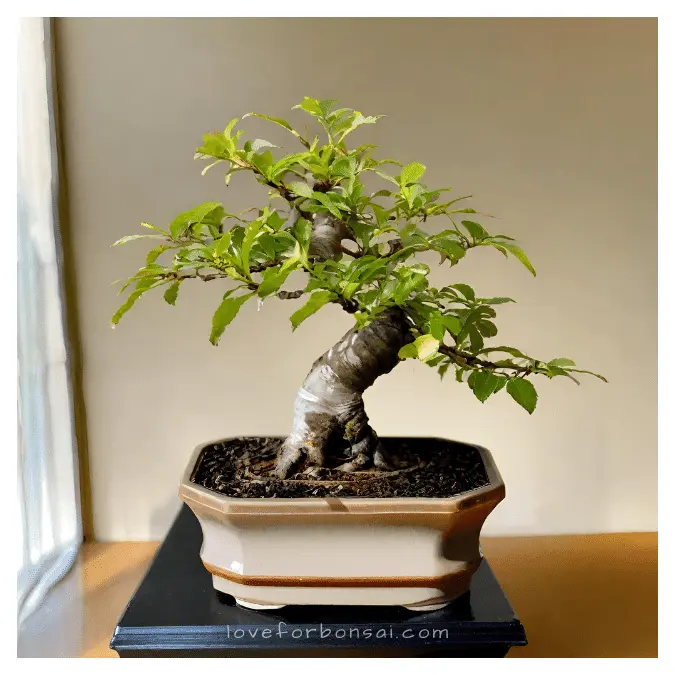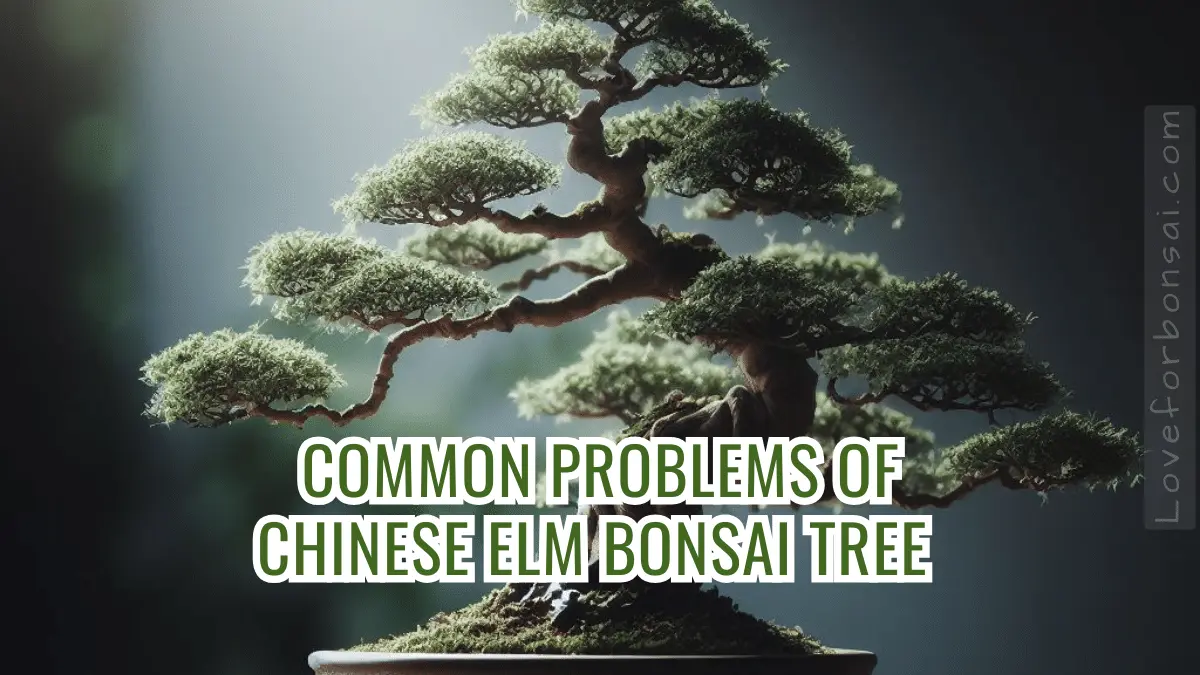As a bonsai gardener with over 15 years of experience, I’ve worked with my fair share of Chinese elm trees. This versatile species is a favorite for bonsai due to its small leaves and elegant branching. However, Chinese elms are susceptible to several common problems that can quickly derail your efforts.
In this post, I’ll share the most frequent issues I see with Chinese elm bonsais and provide actionable tips to get your tree back on track.
Stick with me to the end, and you’ll have the knowledge to diagnose and treat any Chinese elm problem that comes your way.
Understanding the Chinese Elm Tree
Before diving into potential problems, let’s get to know the Chinese Elm tree a bit better. Understanding its characteristics can help you anticipate and address issues effectively.
Chinese Elm (Ulmus parvifolia):
- Origin: Native to China, Japan, and other parts of Asia.
- Features: Small, serrated leaves; fine branches; grayish-brown bark.
- Growth: Deciduous, meaning it sheds its leaves in the fall.
- Resilience: Known for its adaptability and hardiness.
Now, let’s explore some common problems you might encounter when caring for your Chinese Elm bonsai.
1. Overwatering or Underwatering
Symptoms:
- Overwatering: Yellowing leaves, root rot, and mold on the soil surface.
- Underwatering: Wilted leaves, leaf drop, and dry soil.
Solution:
Proper watering is crucial for Chinese Elm bonsais. Ensure the soil is well-draining and never let the tree sit in standing water. Water thoroughly when the top inch of soil feels dry, and adjust the frequency based on the season.

2. Poor Soil Quality
Symptoms:
Slow growth, yellowing leaves, and reduced vigor.
Solution:
Use well-draining bonsai soil mixtures, typically consisting of components like akadama, pumice, and lava rock. Repot your Chinese Elm every 2-3 years to refresh the soil and provide essential nutrients.
3. Pests and Diseases
Symptoms:
- Pests: Visible insects, leaf damage, or webs.
- Diseases: Spots on leaves, wilting, and unusual growth.
Solution:
Monitor your tree regularly for signs of pests or diseases. Use organic pesticides or neem oil for pests, and prune affected branches promptly. Ensure good air circulation and avoid overwatering to prevent fungal diseases.
Is Your Chinese Elm Bonsai Yearning for More Light?
4. Insufficient Light
Symptoms:
Sparse foliage, leggy growth, and weak branches.
Solution:
Place your Chinese Elm bonsai in a location with bright, indirect sunlight. Rotate the tree periodically to ensure even exposure. If natural light is insufficient, consider using grow lights.
5. Improper Pruning and Wiring
Symptoms:
Unnatural or damaged branches, scars, and stunted growth.
Solution:

Learn proper bonsai pruning techniques and use appropriate wiring methods to shape your Chinese Elm. Avoid excessive pruning at once, and always sterilize your tools to prevent infections.
How to Prune Your Chinese Elm Bonsai Tree for Maximum Growth and Beauty.
6. Wrong Temperature and Humidity
Symptoms:
Leaf curling, browning, and leaf drop.
Solution:
Chinese Elms prefer temperatures between 60°F to 75°F (15°C to 24°C) and moderate humidity levels. Protect your tree from extreme cold or heat, and use humidity trays or misting to maintain the right moisture level.
7. Neglecting Fertilization
Symptoms:
Weak growth, pale leaves, and reduced vitality.
Solution:
Feed your Chinese Elm with a balanced, slow-release bonsai fertilizer during the growing season (spring to early autumn). Follow recommended dosages and avoid over-fertilizing, which can harm the tree.
8. Root Issues
Symptoms:
Above-ground roots, crowded root ball, or reduced vigor.
Solution:
Regularly inspect the root system during repotting. Trim and prune the roots to maintain a healthy balance between the roots and the canopy. Ensure proper root care to support overall tree health.
9. Stress Due to Repotting
Symptoms:
Temporary yellowing or wilting after repotting.
Solution:
After repotting, keep your Chinese Elm in a shaded area for a few weeks to reduce stress. Ensure proper watering and care during this recovery period.
10. Lack of Patience
Symptoms:
Impatience can lead to rushed decisions and overhandling.
Solution:
Bonsai cultivation is an art that requires time and patience. Avoid making hasty decisions and enjoy the gradual transformation of your Chinese Elm over the years.
Chinese Elm Bonsai Care Chart:
| Care Aspect | Instructions |
|---|---|
| Placement | Thrives in full sun or partial shade. Can be outdoors in temperate climates year-round. Indoor bonsai should be placed outside in summer and kept in a cool, frost-free room in winter. Frost tolerance varies by region. |
| Watering | Maintain regular watering, keeping the soil consistently moist but not waterlogged. Adjust watering frequency based on climate and season. |
| Fertilizing | Apply appropriate bonsai fertilizer during the growing season. Follow recommended guidelines for fertilization. |
| Pruning and Wiring | Prune to shape and maintain fine branch ramification. Wiring can be used to shape branches. Reacts well to pruning. |
| Repotting | Repot periodically, typically every 2-3 years, to refresh the soil and promote root health. Best done during the spring. |
| Propagation | Propagate through methods like air layering, cuttings, or seeds. Follow suitable propagation techniques. |
| Pests and Diseases | Be vigilant for common bonsai pests and diseases. Implement necessary treatments as needed. |
Chinese Elm Bonsai Tree Care: A Simple Step-by-Step Guide
Conclusion
I hope this overview of common Chinese elm problems gives you the confidence to identify issues early and take appropriate action. Remember, prevention is the best medicine when it comes to bonsai care. With proper watering, fertilization, and pest management, you can avoid many of these potential pitfalls.
Share this post with fellow bonsai enthusiasts who may find it useful. And be sure to explore the other articles on my site for more tips and inspiration.
With the right knowledge and a little diligence, you can master the art of growing a healthy, sculptural Chinese elm bonsai.
